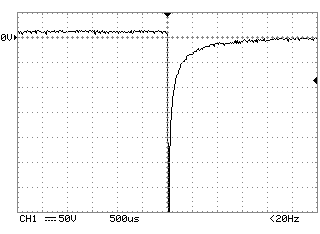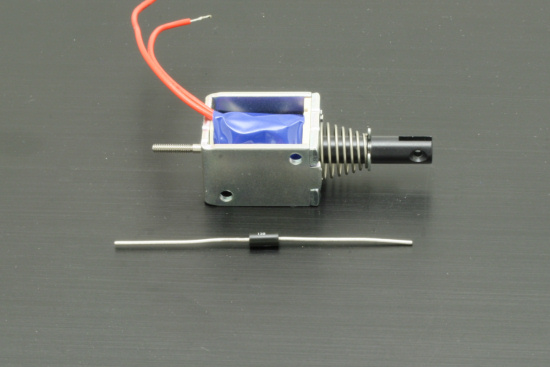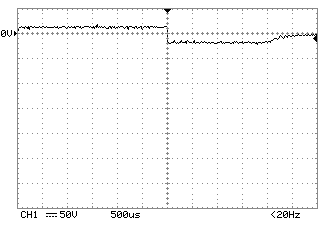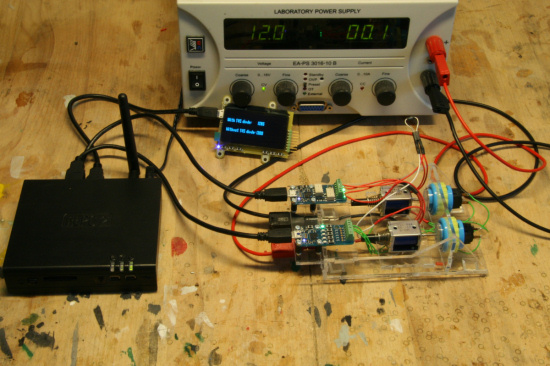 You probably noticed that many manufacturers, such as Yoctopuce, advise against the use of electro-mechanical relays with inductive loads. Such use would lead to a quick aging of the relays. This week we will explain why and how to work around this issue.
You probably noticed that many manufacturers, such as Yoctopuce, advise against the use of electro-mechanical relays with inductive loads. Such use would lead to a quick aging of the relays. This week we will explain why and how to work around this issue.
An inductive load is mostly a device containing coils. Unfortunately most appliances contains coils such as electric transformers or electric motors. That's why it is important to understand those inductive load phenomenons.
The coil, a surprising object
A coil is a component with quite strange electro-magnetic properties, you probably heard about them back at school, but a little refresher wouldn't hurt.
If you drive electric current into a coil, it generates a magnetic field. That's the electromagnet principle. You can build one very easily: just wind some a lot of electric wire around a screw or a nail and connect it to a battery.

Wind electric wire around a screw and you'll have an electromagnet
Coils are also sensitive to magnetic field. Actually, they are sensitive to magnetic field variations. Just move a magnet near a coil, a voltage appears at the coil end. This voltage is proportional to the variation speed. The fastest the magnetic field variation is, the highest the voltage will be. That's the magneto-induction principle, used in dynamos.


Magneto-induction principle: works only when the magnets are moving
Combined together those two phenomenons have a quite surprising effect called auto-induction. Driving current in a coil generates a magnetic field, and this field has an effect on the coil itself. Just cut the current, and the magnetic field brutally collapses. This brutal variation generates a very high voltage spike across the coil. This spike could be dozens of times the initial voltage used to drive the coil before the cut. This principle is used is some generators for cattle electric fences.
Consequences on electro-mechanical relays
An electro-mechanical relay, such as the ones used in the Yocto-Relay, the Yocto-PowerRelay and the Yocto-MaxiRelay, is simply a remote controlled mechanical switch. To open a circuit, the relay just move the working contacts away. If there is a coil in the cut circuit, a voltage spike appears at the coils ends, this spike propagates to the relay work contacts and causes an electric arc. If strong enough, this electric arc will damage the relay contacts. In the most severe cases the arc might jump across the relay isolation and reach the control contacts, causing a disaster in the control electronics.
The coil doesn't have to be very big to cause severe surges. For instance a small electro-mechanical actuator can generate quite an high voltage. Indeed, an electro-mechanical actuator is just a coil with a metallic rod sliding across it when the magnetic field is activated. Here is a small actuator, which, when driven with 12V only, can generate a -500V surge when its power source is brutally shut down.

Small coil...

..but big surge
The TVS Diode
Fortunately, a small electronic component can help us the solve this issue. The TVS diode (Transient Voltage Suppressor) is used in telecommunication equipments to suppress voltage surges, quite frequent in these applications. These diodes are blocking under a specific voltage, and conductive above. The idea is to short the coils ends with a TVS diode. The current from the voltage spike is then trapped in the coil/diode circuit, and is dissipated in the form of heat and no damage is caused to the rest of the circuit. As bi-directional TVS diode works both ways they can be used with both DC and AC.

TVS diode, small, cheap, so useful
So how do we choose the right TVS diode? Well, this depends on your application. There are two important parameters: the reverse standoff voltage is the voltage under which the diode is blocking and the Clamping Voltage is the voltage above which the diode is fully conductive. So when you have to choose your TVS diode, make sure the reverse standoff voltage is slightly above the voltage you plan to use. The Clamping Voltage should be below the maximum voltage admitted by the relay. If you are using AC current, you need to to consider peak voltage not RMS voltage. Also, you have to make sure the diode is able to dissipate the surge energy, but usually this is not an issue.
If we short our little actuator with a TVS diode featuring a 20V clamping voltage, the situation improves greatly. But there is a price to pay: the energy stored in the coil takes some time to dissipate. There is a -20V voltage on the coil terminals for ~2ms.

A TVS diode will cut the voltage surge
Practical application
To make this post a little more fun, we will conduct a little experiment based on actuators driven by a Yocto-Relay. These actuators will push buttons connected to a Yocto-Knob. Both actuators will be driven by one of the two channels of the Yocto-Relay. The Yocto-Knob will then be able to count how many times the relays actually worked. Only one relay will be protected by a TVS diode.

The actuators push on the buttons

A relay torture bench

The whole experiment
Conclusion
If you want to use relays to drive inductive loads in a short experiment, you can content yourself with a little over-sizing of the relays, and it will probably work quite well for some time. But if you want to build reliable hardware, use protection diodes. These are cheap and easy to find. It should be noted that diodes are not the only relay protection technique.


